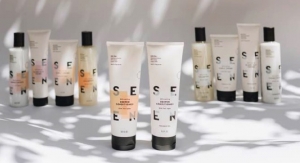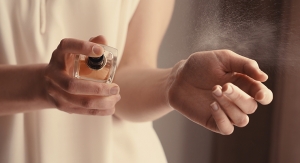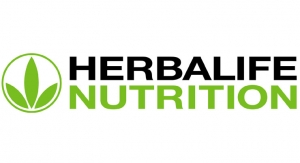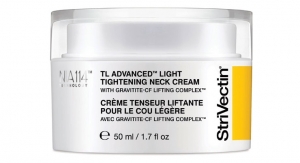Nava Dayan, Dr. Nava Dayan LLC11.01.17
The idea that we should “get back to nature” means that we believe that while historically we were part of nature we are now removed from it. Western society adapted a lifestyle that involves less time outdoors, more time in front of screens and the use of digital communication. Compared to previous generations, we are exposed to less fresh air, sun, soil and sand, plants and animals. Does this mean that in the past humanity was an innate part of nature and is now isolated from it? If so, when and why did this separation happen? How does this need to be close to nature jibe with the great advancements in technology that are perceived as non-natural? And what makes us, as humans, not part of nature and therefore think that things made by humans have no relation to nature?
A book initially published in Hebrew entitled, “Sapiens: a Brief History of Humankind” by Prof. Yuval Harari (translated into English in 2014), discusses key aspects in mankind’s development in relation to its environment. The book presents various theories. One is that humans, unlike animals, are able to create an “imaginary order;” that is, irrational behavior justified with strong human created beliefs. Humans, unlike animals, have the ability to generate an idea, attach value to it and make millions believe and follow it although there is no true reasoning or other proof or justification to it. Instead of trying to further understand and apply nature’s laws, humans create their own laws that may not be in line with nature’s basics. A key example provided in the book is the perception created for money. We all understand the power of money but a creature that has landed here from another planet may not grasp at all why humans act so seriously when it comes to numbers in their bank accounts. In contrast to an animal that does not have such ability, a human is willing to exchange a piece of paper for food, but a monkey will not.
Money is probably the most powerful aspect in human society today, yet no animal can capture such an abstract idea and give it such an enormous supremacy. Similar powers are attributed to religion, nationalities and ideologies. All are unified beliefs that motivate humans for actions that may, in other orders, be irrational and unjustified.
Humans often fail to acknowledge the order in nature. There are more unexplained phenomenons than explained ones. However, when we unravel specific phenomenon we are able to acknowledge the order in it. This imaginary order that we create is the stem of our doubts. We know that we can be brainwashed and we know that we are brainwashed. Who we truly are is flooded with information from society from the day we are born and frames our thought pattern for life. Unless we are on a journey to re-discover true self we are robots of society and just follow the herd. Perhaps the reason for the desire to “go back to nature” comes from our need to be authentic and acknowledge the power of nature to assist us in doing so.
Many of us, when referring to nature, think about inanimate objects such as stone and soil, plants and animals. In the cosmetic industry favorable natural ingredients are mostly plant derived, and some inanimate such as soil-derived powders. Animal-derived products such as beeswax, honey and cholesterol are used too, but to less extent mainly because the use of animal derived products is associated with cruelty toward animals. While this may be true in some instances it can be misleading. For example, sheep may benefit from removal of wool that can be further used to isolate lanolin.
Creating a “natural” skin care product is challenging primarily because the term “natural” may be interpreted differently by various populations because of their education, experiences and values. For one, “natural” may be a product composed of plant compounds obtained with the least processing not including animal derived components, while another may legitimize compounds that are originally derived from plants but undergo some chemical modification. Quantifying and weighting human intervention is a key in consumer perception of natural compounds.
The following are a few key aspects to consider when developing a “natural” skin care product.
Composition
Perhaps the most important piece of information is the composition of the compound of interest. Chemical name and International Nomenclature of Cosmetic Ingredients (INCI) do not completely represent composition. Two compounds can have exactly the same INCI but very different composition. For example, two compounds with the INCI “green tea extract” can differ in the genus of the plant, extraction method, extraction solvent, phytochemical contents and preservatives just to name a few. This means that one extract can merely be composed of water, preservatives and traces of phytochemicals, while the other can be richer in valuable polyphenols and extracted in a solvent that does not require preservation. If one is interested in the compound for its potential activity, since the activity is attributed to the phytochemistry, it is essential that such is revealed and evaluated.
Sourcing & Processing
The geographic location from which the plant is obtained may be important for reasons such as secured supply and time from harvest to processing. It is also important to know if the plant is obtained from the wild or if its cultivated. Cultivation brings added value of plant composition consistency and more controlled, and therefore secured, supply.
Plant derived compounds may vary because of natural means that are difficult to control. It is therefore important that one understands what properties are essential and what can be compromised. For example, color and odor extract can vary. Therefore, a specific extract can impart a range of colors and scents to the finished formulation. In the process of development, the formulation chemist should estimate if this range of product characteristic variation is acceptable.
The consistency is to be reflected in the product specifications. Generally, the more detailed the specifications, the higher the odds to maintain consistency. However, the specifications should also be meaningful. If they contain only general characteristics such as color or odor, they do not define the specific compound. Similar color and odor can be characteristic to various plants. The specifications should reflect means of identification. Reference to “standardized extracts” means that the extracts contain a relatively narrow range of one or more chemistries that are distinct to the specific plant.
For example, licorice extract can be standardized to contain glabridin, glycyrrhetinic acid or both. Research supports evidence of tyrosinase inhibition for glabridin and inflammation reduction for glycyrrhetinic acid. So, if the claim of interest is skin brightening and even-toning, glabridin should be the phytochemical of interest, but if it’s anti-inflammatory activity it should be standardized for glycyrrhetinic acid. Generally, at least three different lots should be evaluated before making a decision to select a specific compound. Requesting certificates of analysis for three different lots can be helpful in such evaluation. The chemical of interest should be tested utilizing a validated analytical method such as high-performance liquid chromatography (HPLC) or gas chromatography (GC).
Shelf Life and Stability
Many plant extracts are difficult to stabilize. When in the plant, the phytochemicals are protected, but when extracted, isolated and exposed to air and light, they may rapidly degrade. It may be inadequate to select a compound with questionable stability or one that must be kept under specific unrealistic conditions such as frozen and protected from light. Unless one is willing to invest in special means of production, packaging and consumer use, using compounds that are prone to degradation when in the formulation and placed on the shelf can result in a loss of efficacy or worse, adverse skin reactions. Typically, in skin care studies for safety and efficacy, the formulation is used weeks after production; but in real life, a formulation can be on the shelf up to two years before it is purchased by the consumer. It is essential, therefore, that the product is assessed for its stability and integrity throughout raw material processing, packaging, storage, production and finished product expected shelf life.
Microbial Burden
Bacteria inhabit natural compounds when collected. Often time this biota is eliminated in processing and should be carefully evaluated and tested. Specific compounds may be favorable to bacteria. Those are mostly compounds that serve as nutrients for the organisms and contain sugars, amino acids, fats and other nutrients. If an extract is diluted in water or in non-self-preserved media, preservatives should be added to it and it should be tested for preservation effectiveness in a microbial challenge test.
Safety Assessment
There is a misconception that if a compound of composition is edible it is necessarily safe to apply to skin and will not cause an adverse reaction. This is inaccurate. Our digestive system is profoundly different from our skin. In fact, the purpose of these two organs may be viewed as opposites. While the purpose of the digestive system is to internalize and absorb nutrients, the purpose of the skin is to shield and protect the body by preventing absorption. It is certainly helpful to have safety data on specific compounds obtained from nutrition research, but a thorough safety analysis and gap filling should be conducted when changing purpose of use from nutrition to cosmetics.
Efficacy
There is a perception within the industry and among consumers that products that contain natural actives are inherently less effective when compared to synthetic compounds. From salicylic acid that is derivatized to aspirin to effective antibiotics, many of the drugs we use were not invented by humans but were discovered by us in nature. It is difficult to establish what is the reason for such perception but one reason can be the industry tends to use non-standardized ingredients at non-effective levels. If a finished product contains only very small amounts of an active and/or if this active is not standardized to its chemistry of interest, it may indeed not demonstrate efficacy. However, if it contains known levels of the active at percentages that demonstrate effectiveness and its stability is confirmed, there is no reason for it to be less effective when compared to a synthetic compound merely because of its source.
Interestingly, marketers predict that the trend of consumer desire for “natural” products will grow in parallel to the use of sophisticated technological advancements and marrying both may be a challenge that we face as an industry when developing products. In conclusion, a chemical composition is what it is regardless of its source. The “value” we attribute to it is being fed by media education. When considering use of compound source and choosing between “natural” and “synthetic” the selection should be based on meeting the product performance objectives. The fact that a compound is obtained from a plant source does not automatically grant it properties such as innate safety or ineffectiveness. It also does not mean that it is more or less valuable or stable. Raw material suppliers should invest first and foremost in the deep understanding and analysis of the composition they develop and sell and communicate it clearly to formulation chemists so a decision of choice is made based on value, not perception. Finished products manufacturers should not incorporate trace amounts of natural extracts “for claim” purposes only. Such practice is adding to consumers’ mistrust of our industry. If a compound is incorporated into a formulation and presented for such, it should add true value that can be clearly assessed.
Nava Dayan
Owner
Dr. Nava Dayan LLC
Nava Dayan Ph.D. is the owner of Dr. Nava Dayan L.L.C, a skin science and research consultancy and serving the pharmaceutical, cosmetic, and personal care industries. She has 25 years of experience in the skin care segment, and more than 150 publication credits.
Tel: 201-206-7341
E-mail: nava.dayan@verizon.net
A book initially published in Hebrew entitled, “Sapiens: a Brief History of Humankind” by Prof. Yuval Harari (translated into English in 2014), discusses key aspects in mankind’s development in relation to its environment. The book presents various theories. One is that humans, unlike animals, are able to create an “imaginary order;” that is, irrational behavior justified with strong human created beliefs. Humans, unlike animals, have the ability to generate an idea, attach value to it and make millions believe and follow it although there is no true reasoning or other proof or justification to it. Instead of trying to further understand and apply nature’s laws, humans create their own laws that may not be in line with nature’s basics. A key example provided in the book is the perception created for money. We all understand the power of money but a creature that has landed here from another planet may not grasp at all why humans act so seriously when it comes to numbers in their bank accounts. In contrast to an animal that does not have such ability, a human is willing to exchange a piece of paper for food, but a monkey will not.
Money is probably the most powerful aspect in human society today, yet no animal can capture such an abstract idea and give it such an enormous supremacy. Similar powers are attributed to religion, nationalities and ideologies. All are unified beliefs that motivate humans for actions that may, in other orders, be irrational and unjustified.
Humans often fail to acknowledge the order in nature. There are more unexplained phenomenons than explained ones. However, when we unravel specific phenomenon we are able to acknowledge the order in it. This imaginary order that we create is the stem of our doubts. We know that we can be brainwashed and we know that we are brainwashed. Who we truly are is flooded with information from society from the day we are born and frames our thought pattern for life. Unless we are on a journey to re-discover true self we are robots of society and just follow the herd. Perhaps the reason for the desire to “go back to nature” comes from our need to be authentic and acknowledge the power of nature to assist us in doing so.
Many of us, when referring to nature, think about inanimate objects such as stone and soil, plants and animals. In the cosmetic industry favorable natural ingredients are mostly plant derived, and some inanimate such as soil-derived powders. Animal-derived products such as beeswax, honey and cholesterol are used too, but to less extent mainly because the use of animal derived products is associated with cruelty toward animals. While this may be true in some instances it can be misleading. For example, sheep may benefit from removal of wool that can be further used to isolate lanolin.
Creating a “natural” skin care product is challenging primarily because the term “natural” may be interpreted differently by various populations because of their education, experiences and values. For one, “natural” may be a product composed of plant compounds obtained with the least processing not including animal derived components, while another may legitimize compounds that are originally derived from plants but undergo some chemical modification. Quantifying and weighting human intervention is a key in consumer perception of natural compounds.
The following are a few key aspects to consider when developing a “natural” skin care product.
Composition
Perhaps the most important piece of information is the composition of the compound of interest. Chemical name and International Nomenclature of Cosmetic Ingredients (INCI) do not completely represent composition. Two compounds can have exactly the same INCI but very different composition. For example, two compounds with the INCI “green tea extract” can differ in the genus of the plant, extraction method, extraction solvent, phytochemical contents and preservatives just to name a few. This means that one extract can merely be composed of water, preservatives and traces of phytochemicals, while the other can be richer in valuable polyphenols and extracted in a solvent that does not require preservation. If one is interested in the compound for its potential activity, since the activity is attributed to the phytochemistry, it is essential that such is revealed and evaluated.
Sourcing & Processing
The geographic location from which the plant is obtained may be important for reasons such as secured supply and time from harvest to processing. It is also important to know if the plant is obtained from the wild or if its cultivated. Cultivation brings added value of plant composition consistency and more controlled, and therefore secured, supply.
Plant derived compounds may vary because of natural means that are difficult to control. It is therefore important that one understands what properties are essential and what can be compromised. For example, color and odor extract can vary. Therefore, a specific extract can impart a range of colors and scents to the finished formulation. In the process of development, the formulation chemist should estimate if this range of product characteristic variation is acceptable.
The consistency is to be reflected in the product specifications. Generally, the more detailed the specifications, the higher the odds to maintain consistency. However, the specifications should also be meaningful. If they contain only general characteristics such as color or odor, they do not define the specific compound. Similar color and odor can be characteristic to various plants. The specifications should reflect means of identification. Reference to “standardized extracts” means that the extracts contain a relatively narrow range of one or more chemistries that are distinct to the specific plant.
For example, licorice extract can be standardized to contain glabridin, glycyrrhetinic acid or both. Research supports evidence of tyrosinase inhibition for glabridin and inflammation reduction for glycyrrhetinic acid. So, if the claim of interest is skin brightening and even-toning, glabridin should be the phytochemical of interest, but if it’s anti-inflammatory activity it should be standardized for glycyrrhetinic acid. Generally, at least three different lots should be evaluated before making a decision to select a specific compound. Requesting certificates of analysis for three different lots can be helpful in such evaluation. The chemical of interest should be tested utilizing a validated analytical method such as high-performance liquid chromatography (HPLC) or gas chromatography (GC).
Shelf Life and Stability
Many plant extracts are difficult to stabilize. When in the plant, the phytochemicals are protected, but when extracted, isolated and exposed to air and light, they may rapidly degrade. It may be inadequate to select a compound with questionable stability or one that must be kept under specific unrealistic conditions such as frozen and protected from light. Unless one is willing to invest in special means of production, packaging and consumer use, using compounds that are prone to degradation when in the formulation and placed on the shelf can result in a loss of efficacy or worse, adverse skin reactions. Typically, in skin care studies for safety and efficacy, the formulation is used weeks after production; but in real life, a formulation can be on the shelf up to two years before it is purchased by the consumer. It is essential, therefore, that the product is assessed for its stability and integrity throughout raw material processing, packaging, storage, production and finished product expected shelf life.
Microbial Burden
Bacteria inhabit natural compounds when collected. Often time this biota is eliminated in processing and should be carefully evaluated and tested. Specific compounds may be favorable to bacteria. Those are mostly compounds that serve as nutrients for the organisms and contain sugars, amino acids, fats and other nutrients. If an extract is diluted in water or in non-self-preserved media, preservatives should be added to it and it should be tested for preservation effectiveness in a microbial challenge test.
Safety Assessment
There is a misconception that if a compound of composition is edible it is necessarily safe to apply to skin and will not cause an adverse reaction. This is inaccurate. Our digestive system is profoundly different from our skin. In fact, the purpose of these two organs may be viewed as opposites. While the purpose of the digestive system is to internalize and absorb nutrients, the purpose of the skin is to shield and protect the body by preventing absorption. It is certainly helpful to have safety data on specific compounds obtained from nutrition research, but a thorough safety analysis and gap filling should be conducted when changing purpose of use from nutrition to cosmetics.
Efficacy
There is a perception within the industry and among consumers that products that contain natural actives are inherently less effective when compared to synthetic compounds. From salicylic acid that is derivatized to aspirin to effective antibiotics, many of the drugs we use were not invented by humans but were discovered by us in nature. It is difficult to establish what is the reason for such perception but one reason can be the industry tends to use non-standardized ingredients at non-effective levels. If a finished product contains only very small amounts of an active and/or if this active is not standardized to its chemistry of interest, it may indeed not demonstrate efficacy. However, if it contains known levels of the active at percentages that demonstrate effectiveness and its stability is confirmed, there is no reason for it to be less effective when compared to a synthetic compound merely because of its source.
Interestingly, marketers predict that the trend of consumer desire for “natural” products will grow in parallel to the use of sophisticated technological advancements and marrying both may be a challenge that we face as an industry when developing products. In conclusion, a chemical composition is what it is regardless of its source. The “value” we attribute to it is being fed by media education. When considering use of compound source and choosing between “natural” and “synthetic” the selection should be based on meeting the product performance objectives. The fact that a compound is obtained from a plant source does not automatically grant it properties such as innate safety or ineffectiveness. It also does not mean that it is more or less valuable or stable. Raw material suppliers should invest first and foremost in the deep understanding and analysis of the composition they develop and sell and communicate it clearly to formulation chemists so a decision of choice is made based on value, not perception. Finished products manufacturers should not incorporate trace amounts of natural extracts “for claim” purposes only. Such practice is adding to consumers’ mistrust of our industry. If a compound is incorporated into a formulation and presented for such, it should add true value that can be clearly assessed.
Nava Dayan
Owner
Dr. Nava Dayan LLC
Nava Dayan Ph.D. is the owner of Dr. Nava Dayan L.L.C, a skin science and research consultancy and serving the pharmaceutical, cosmetic, and personal care industries. She has 25 years of experience in the skin care segment, and more than 150 publication credits.
Tel: 201-206-7341
E-mail: nava.dayan@verizon.net



























